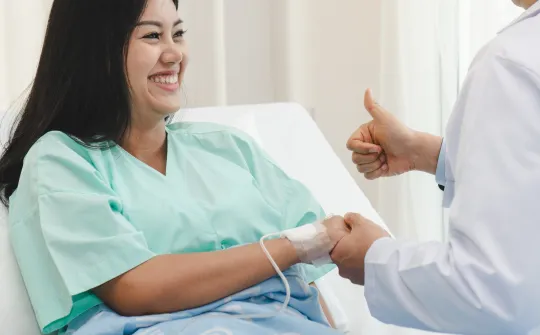
Rotator Cuff Repair
Relieve Persistent Pain with Arthroscopic Rotator Cuff Repair
If you have been diagnosed with a rotator cuff tear, but nonsurgical methods have not relieved your pain, surgery may be recommended. Dr. Edward Seade offers arthroscopic rotator cuff repair at our Austin, TX. This minimally invasive approach can relieve pain while minimizing risks and recovery time. Reach out today to find out how rotator cuff repair surgery can improve your quality of life.

Our Shoulder Expert
Rotator Cuff Repair: Understanding the Basics
Because the shoulder is held in place with a complicated network of muscles and tendons called the rotator cuff, it is simultaneously one of the most flexible and vulnerable joints in the body. A damaged rotator cuff can cause considerable discomfort and severely affect both arm strength and function. While minor tears usually heal with rest and strengthening exercises, some damage requires more extensive care.
Rotator cuff repair surgery is usually recommended if a patient still experiences painful symptoms after six months or more of nonsurgical treatment. If a patient is active in sports, if they perform work requiring regular overhead arm positions, or if the tear was caused by a recent and acute injury, surgery may be recommended sooner.
Surgery Details
Dr. Seade performs minimally invasive arthroscopic rotator cuff repair on smaller tears to make surgery and recovery faster and more efficient. Traditional open surgery requires the entire joint to be opened. This results in a long recovery, more scar tissue, and a greater risk of complications.
During arthroscopic surgery, Dr. Seade uses a tiny camera attached to a flexible tube to view the inside of the shoulder without opening it completely. Using this instrument as a guide, he can repair the damage with much smaller incisions. As a result, recovery is faster and both scar tissue and risk of complications are substantially minimized.
Understanding the Procedure
Arthroscopic rotator cuff repair surgery is an outpatient surgery performed under general anesthesia. The procedural steps depend on the nature of the injury. If there is only a partial tear, Dr. Seade will remove any tissue fragments in the shoulder to smooth the tendon and reduce risk of further tearing. If the tendon is completely torn, he will either need to reattach the tendon to the head of the humerus (upper arm bone) or repair the tendon with sutures. In some cases, Dr. Seade must shave down the bone slightly or remove bone spurs causing irritation. Once the damage is repaired and the incisions are closed, patients are taken to the recovery room, where they will rest for a period before being discharged.

General Recovery Timeline
During the first few weeks after your surgery, you will need to immobilize your arm so it can heal correctly. Patients usually wear a sling during this period to prevent unnecessary movement. The severity of the injury determines how long you will need the sling.
Once your surgeon has determined that your shoulder has healed, you can begin physical therapy. This will typically start with passive exercises in which your physical therapist supports your arm as you move it into various positions. After a few weeks of this routine, the strength and range of motion of the tendons has improved enough to begin active, unsupportive shoulder exercises. Eventually, patients can begin strengthening exercises with weights.
Even with minimally invasive surgery, a full recovery can take months. However, most patients report substantially reduced pain, a functional range of motion, and adequate strength within 4 to 6 months of surgery.

